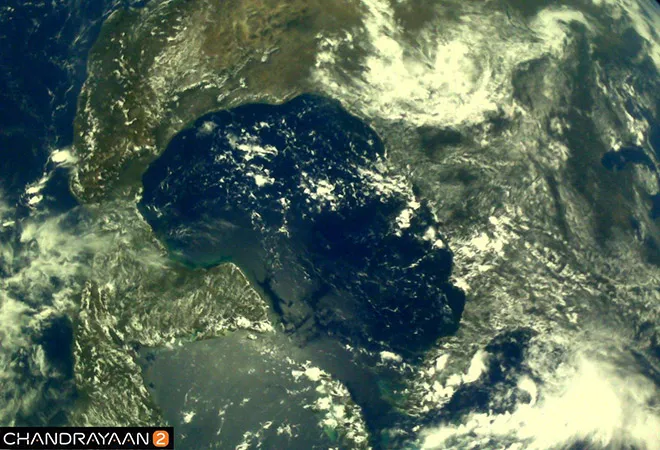
Amidst the gloom of Vikram Lander’s failure to make the lunar landing according to plan. The lander, which was carrying the Pragyaan Rover, has lost communication with mission control. Although latest reports suggest that, the Chandrayaan’s orbiter has located the Vikram and imaged it. The module, which was expected to touchdown on the South Pole of the moon and the Pragyaan rover were to carry out critical experiments on the Southern side of the lunar surface. Whatever the present status of the Vikram lander, the feat that the Indian Space Research Organisation (ISRO) almost accomplished, the mission, the first of its kind undertaken by the ISRO was bound to be daunting.
Whatever the present status of the Vikram lander, the feat that the Indian Space Research Organisation (ISRO) almost accomplished, the mission, the first of its kind undertaken by the ISRO was bound to be daunting.
ISRO is not the first to have experienced failure in its first attempt for a mission of this nature, which was complex. Very recently, the Israeli non-profit space group SpaceIL lunar lander the Beresheet broke up into pieces due to a hard landing. Despite the wealth of knowledge about the lunar environment, there are mysteries surrounding the celestial body’s regolith or surface soil, which potentially generates dust that blinds sensors of landing spacecraft, which is presumably why the Vikram Lander did not touch down successfully. The India space agency has had experience landing spacecraft on the lunar as it did with the Chandrayaan -1 mission in 2008. However, the latter was a “hard landing”, which did not place a premium on the technical demands for deceleration that the Vikram Lander module evidently did not achieve. Pursuing a soft landing on the lunar surface was fraught with risks. While one may view the failure to land a module as merely a setback, it has implications in the long-term for any future manned mission to the moon, if not space. If ISRO cannot “soft land” unmanned spacecraft onto the moon, it will be compelled to inevitably delay any future manned mission to the celestial body. Indeed, Chandrayaan-2 was intended to be a stepping-stone for future manned missions to the lunar surface. On the other hand, what might this setback have for India’s Gaganyaan mission - its first manned space mission? The implication most likely will be limited. Here we need to contrast the two types of missions.
Firstly, landing a spacecraft on the lunar surface and the surface of the earth are not exactly the same. The moon’s gravity is 1/6th as potent as the earth. A bird feather on the moon will drop at the same rate when dropped from identical height as a hammer, and hit the surface at the same time if dropped simultaneously with the hammer, despite the two objects being of unequal mass. Secondly, while the moon has some gravity, it does not have air. Ambient air pressure or atmospheric pressure is not an issue on the moon as it is on earth. Indeed, the rate of descent once the spacecraft enters lunar orbit would be greater on the moon than on earth. Therefore, landing a module on the moon is not the same as landing it on earth in that decelerating the Vikram Lander for a soft touchdown is where the mission went awry. To be sure, ISRO’s scientists would have factored all these elements prior to their launch of the mission. However, following entry into lunar orbit the precise thrust of the Vikram module’s engines would require them firing in the opposite direction of the descent, which likely did not happen leading to a hard landing. All the rigorous simulations calculating the rate of descent into lunar orbit, the geographic lay out of the landing site and designing an engine that provides precise thrust to make a soft landing are no substitute ultimately for actually executing a mission. All space missions to celestial and planetary bodies including the Chandrayaan-2 success depend on pre-programming undertaken tens of thousands of miles away, which the space team that designed, built and launched it cannot fully control.
All the rigorous simulations calculating the rate of descent into lunar orbit, the geographic lay out of the landing site and designing an engine that provides precise thrust to make a soft landing are no substitute ultimately for actually executing a mission.
Despite this setback, these factors are unlikely to delay and impose direct limits on India’s planned manned space mission. Simply because India has successfully soft landed spacecraft on the earth. For the Gaganyaan mission, which is slated to be launched in 2022, ISRO is likely to be on firmer footing. India has had experience in de-orbiting or re-entering spacecraft from space through the earth’s atmosphere, which is different from landing it on the moon. For instance, ISRO with the Indian Navy (IN) successfully landed the Space Recovery Experiment (SRE) at a pre-selected point, which was roughly 165 kilometers (kms) from the Southeast of the Indian coast in the Bay of Bengal. ISRO confirmed this capability twelve years ago when it successfully executed the re-entry of the SRE in 2007. This half-tonne capsule was de-orbited following a twelve-day rendezvous through space. The SRE conducted experimentation under microgravity conditions, generated data on reusable launch vehicles and provided useful information on some of the demands for India’s future manned and unmanned moon missions. In addition, the half-tonne SRE successfully tested numerous other capacities necessary for the successful recovery of a capsule from space. These included lightweight thermal protection systems, aero-thermal structure design, hypersonic aerothermodynamics, navigation, guidance and control of re-entry vehicle, deceleration, floating systems and recovery systems and management of communications blackout. All systems that have been tested will be crucial to the success of the Gaganyaan mission.
Given the validation of all these systems and despite the partial failure of Chandrayaan-2 as the orbiter is successfully executing the remainder of the mission by sending back imagery data and mapping the lunar surface, it is highly improbable that the Gaganyaan mission would be delayed. Today, India has already shortlisted pilots to undertake manned space flight. Regardless of the fact that space flight and space exploration are generally a treacherous and uncertain pursuit, India’s space endeavour should and will remain relentless.
The views expressed above belong to the author(s). ORF research and analyses now available on Telegram! Click here to access our curated content — blogs, longforms and interviews.




 PREV
PREV


